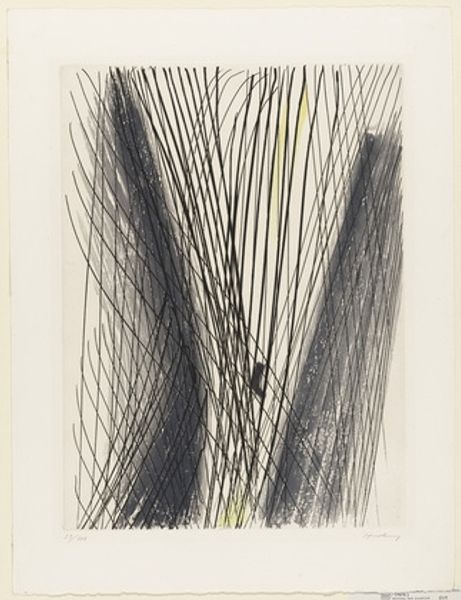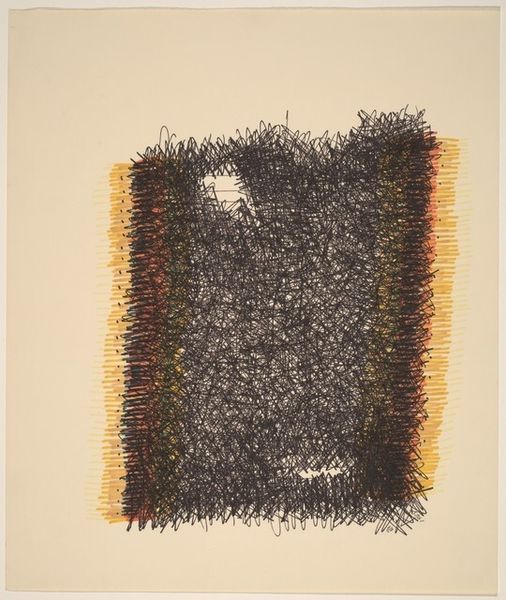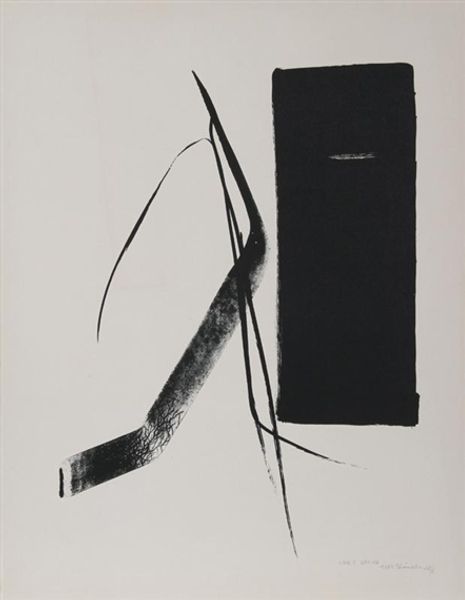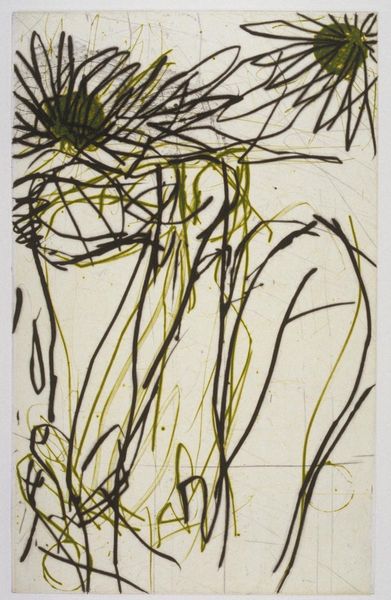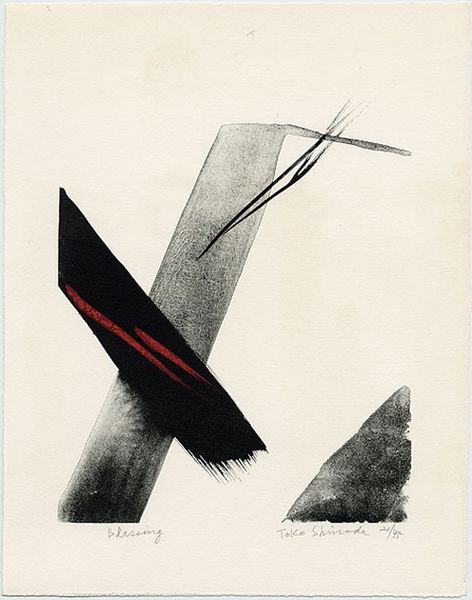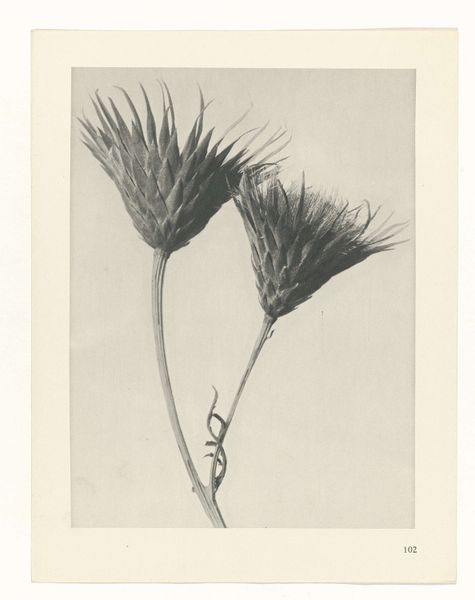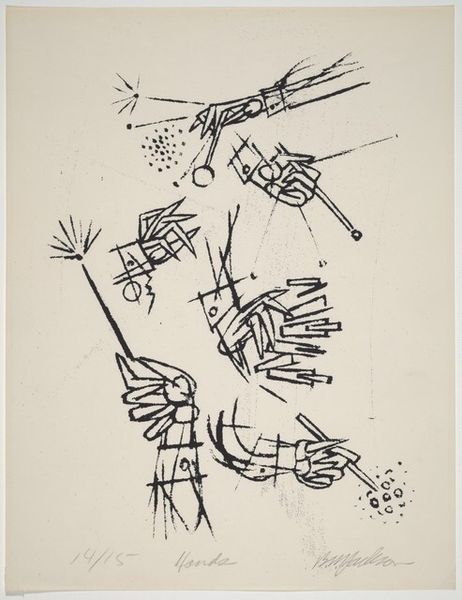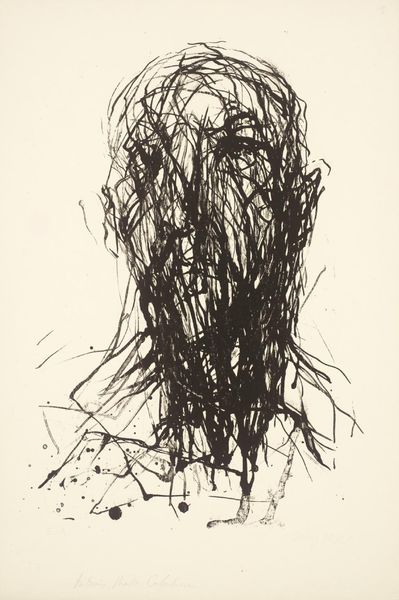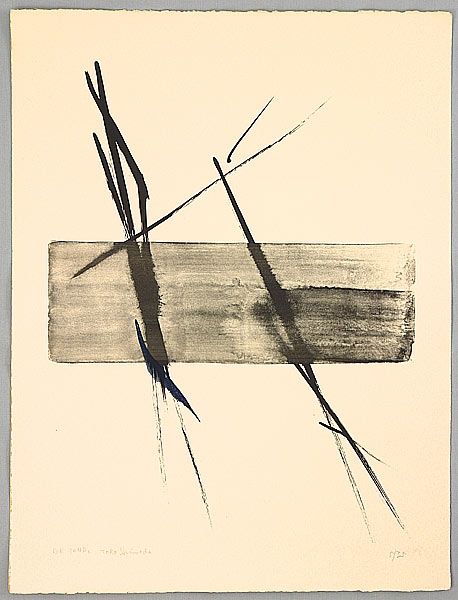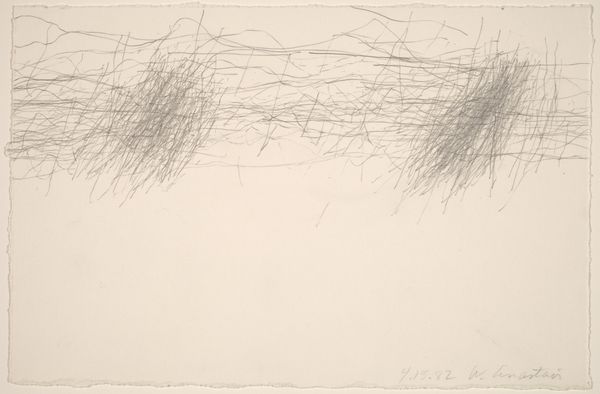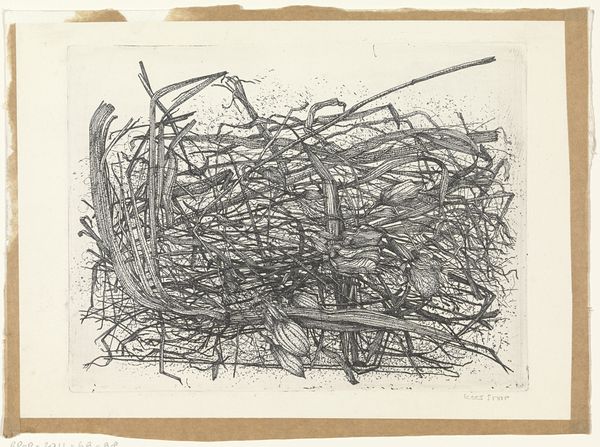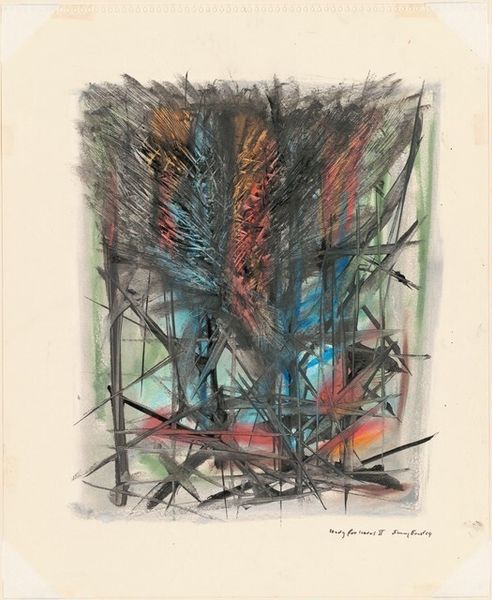
drawing, ink
#
abstract-expressionism
#
drawing
#
non-objective-art
#
form
#
ink line art
#
ink
#
line
Copyright: Hans Hartung,Fair Use
Editor: This is Hans Hartung’s “Untitled (L 12)”, made in 1957 using ink. I am struck by the dynamic energy conveyed by such simple lines and sparse colors. What can you tell me about this drawing? Curator: Well, thinking about art’s role in society during the late 1950s, particularly in the West, we see abstract expressionism gaining momentum as a statement of individual freedom. This piece embodies that ethos, seemingly spontaneous, but likely carefully considered in its execution. The bold lines are assertive, but how do they engage you beyond the aesthetic level? Editor: I see the artist’s gesture as direct and immediate, almost confrontational, refusing to depict anything recognizable. How was the public's reaction to this rejection of traditional form? Curator: Abstract expressionism challenged conventional artistic and social values. Think of the context: post-war anxieties, the Cold War... art became a space for expressing complex emotions and asserting individual identity. The lack of overt representation allowed viewers to project their own interpretations. But who got to see such works, and what did access mean? Editor: It's interesting to consider how access to art influences its impact and interpretation. That idea of projecting inner emotions really helps me understand why non-objective art gained prominence. Curator: Exactly! And where these works were shown—which galleries, which collectors supported them—says a lot about the values being promoted at that time. Editor: This makes me appreciate how abstract art serves as both a cultural and individual expression. It definitely gives me more to consider. Curator: Me too! It’s fascinating to unpack how artworks, at first glance very personal, are always embedded in broader social and historical contexts.
Comments
No comments
Be the first to comment and join the conversation on the ultimate creative platform.
